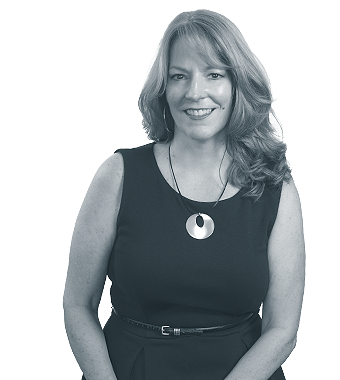By Tricia Lepofsky, ChFC®
Taxes are a major concern for those planning for retirement, and the backdoor Roth IRA can be a smart way to reduce their impact. While this strategy isn’t for everyone, it could be an ideal option for those looking to reduce their tax burden in retirement. In this article, we’ll explain everything you need to know about the backdoor Roth IRA, including the rules and eligibility requirements, so you can decide if it’s right for you.
What Is a Backdoor Roth IRA?
A backdoor Roth IRA is an IRS-sanctioned loophole that lets high-income earners reap the benefits of a Roth without violating the income limits.
Roth IRAs come with some major tax benefits. You pay taxes on your contributions up front, but then your investments grow 100% tax-free. Additionally, when you start taking withdrawals in retirement, none of that money counts as taxable income. It’s a very attractive option for those who can qualify.
But that’s the problem—most high-income earners don’t qualify for a Roth IRA. As of 2023, you’re not eligible to contribute to a Roth IRA if you make at least $153,000 as an individual or $228,000 as a married couple.
This begs the question: How can you enjoy the sweet tax perks that come with a Roth IRA if your income is over these limits? The solution is the backdoor Roth.
How Does a Backdoor Roth IRA Work?
Let’s say your income exceeds the legal limit for a Roth IRA, but you still want to fund an account. First, you will need to open a traditional IRA and fund it with non-deductible contributions. Then, you will immediately convert your non-deductible IRA to a Roth IRA and repeat this process each year in order to take advantage of tax-free growth.
In this scenario, you can avoid the IRA income limits, but you cannot avoid the annual contribution limits. This means that you can fund a maximum of $6,500 in 2023 ($7,500 if you’re over the age of 50) per year. This may seem small, but over time you can amass a sizable retirement savings, especially when combined with other tax-advantaged retirement vehicles.
A backdoor Roth IRA is a useful wealth strategy that can save you thousands in taxes.Unlike traditional retirement accounts, backdoor Roth IRAs aren’t subject to required minimum distributions (RMDs). This means you won’t be forced to start taking withdrawals—and paying taxes on those withdrawals—when you reach age 73.
This is yet another point in favor of backdoor Roths: estate planning benefits. With no required RMDs, you’re free to let your account balance grow and build for as long as you’d like. Then, you can pass it on to your heirs if you wish.
Considerations of a Backdoor Roth IRA
There are some things to be aware of when considering a backdoor Roth. For one, they are irreversible. That means if you converted too much at once and got pushed into a higher marginal tax bracket, you can’t take it back. But this can usually be avoided by keeping your conversion amounts to the annual contribution limits.
You will also need to consider those tricky state taxes. If you live in a state that has income tax, you’ll likely owe state taxes on your backdoor Roth conversion in addition to federal taxes. However, some states exempt part of your distribution if you’re over a certain age.
Backdoor Roth IRAs, just like regular Roth IRAs, have two, five-year rules to keep in mind. The first rule says that you must wait at least five years from your first contribution before you can make a penalty-free withdrawal from your Roth IRA—even if you’re over age 59½.
The second five-year rule states that each of your backdoor Roth conversions has its own five-year period. For example, if you do a conversion in 2023 and another in 2024, you’ll have to wait until at least 2028 to access the first conversion and 2029 to access the second.
As with anything tax-related, consult a wealth advisor to position your money in a way that minimizes tax liability and maximizes growth.
Could a Backdoor Roth IRA Be Right For You?
We understand that you’ve worked hard for your money and will want to shield the wealth you’ve accumulated. At KFA Private Wealth Group, we’re here to help maximize your overall portfolio with strategies that may increase your savings while reducing your tax burden in retirement. If you’re in the category of people who make too much to qualify for a standard Roth IRA and can still manage to pay taxes on that rollover amount, you can utilize this strategy in your financial plan. We’re here to answer your questions and put you on the path to financial success. Contact us today by emailing at tricia@kfapwg.com or call 571-327-2222 to schedule an appointment.
About Tricia
Tricia Lepofsky, ChFC®, is a financial advisor at KFA Private Wealth Group, a registered independent advisory firm founded on the premise of providing sound financial and investment advice. With a background in music education and opera, Tricia transitioned to the financial industry to help people understand what their money can do and feel more in control as they work toward their goals. Tricia is known for her attention to detail and her dedication to her clients and their unique financial challenges. She is passionate about building relationships with her clients and partnering with them as they walk through life’s milestones, keeping them accountable and motivated to pursue their goals. While she serves a diverse range of clients, Tricia uses her background of 18 years in the Washington National Opera and Washington Concert Opera to specialize in serving hardworking, intelligent individuals who have a connection to the arts. In her spare time, Tricia loves to travel with her husband, Mark, hike trails along the Potomac River or in the Blue Ridge Mountains, and support former colleagues by attending live performances of operas and musicals. To learn more about Tricia, connect with her on LinkedIn.




